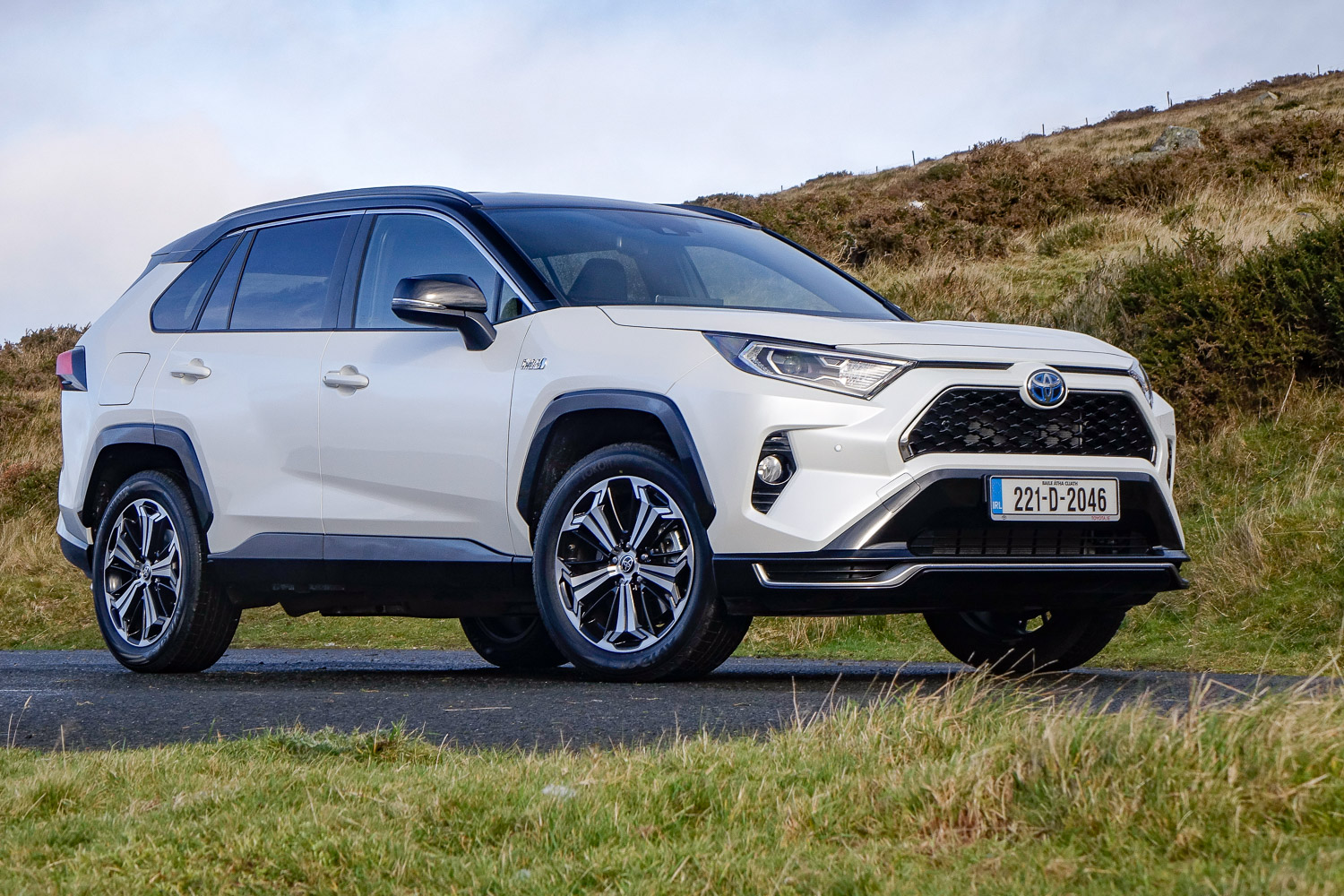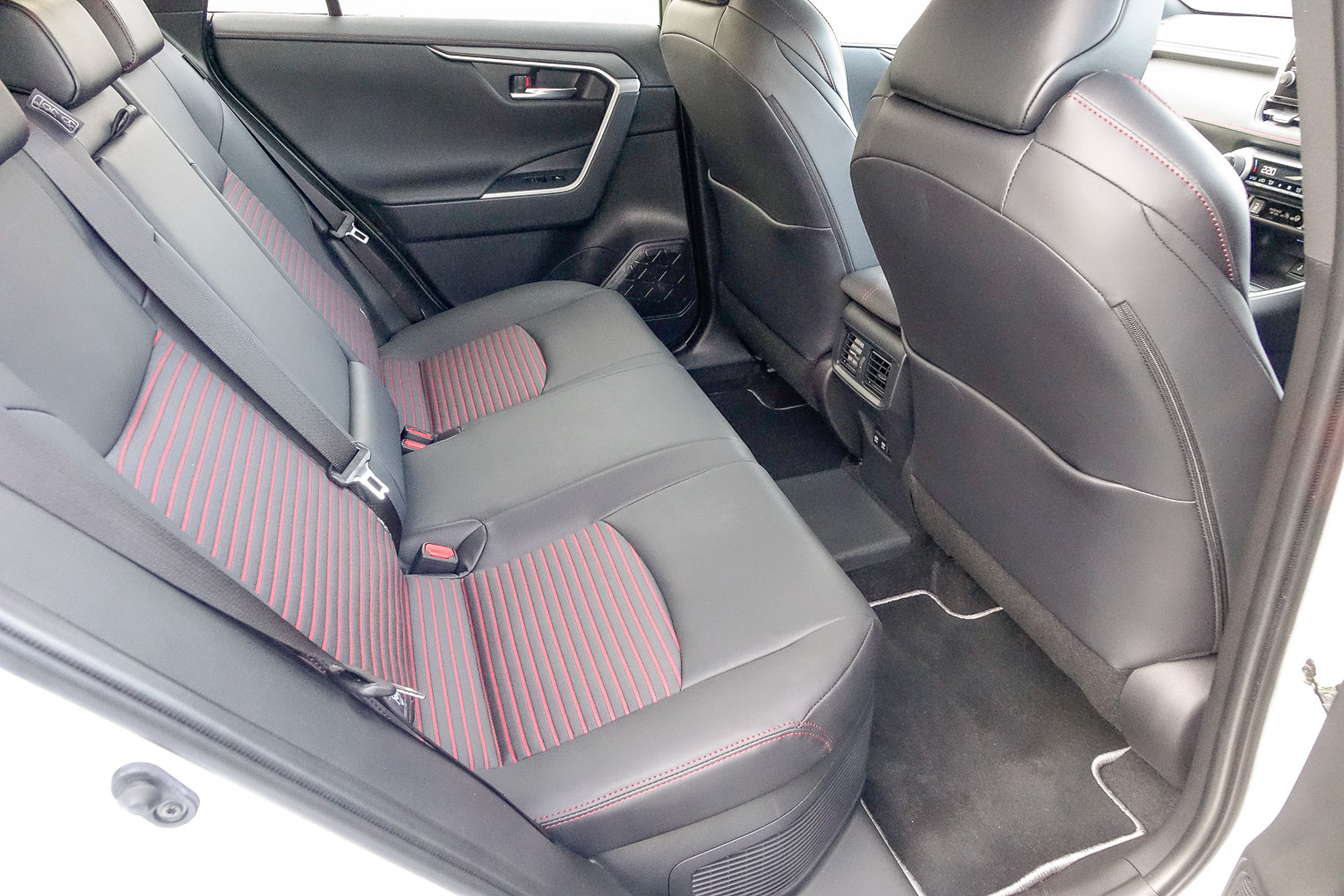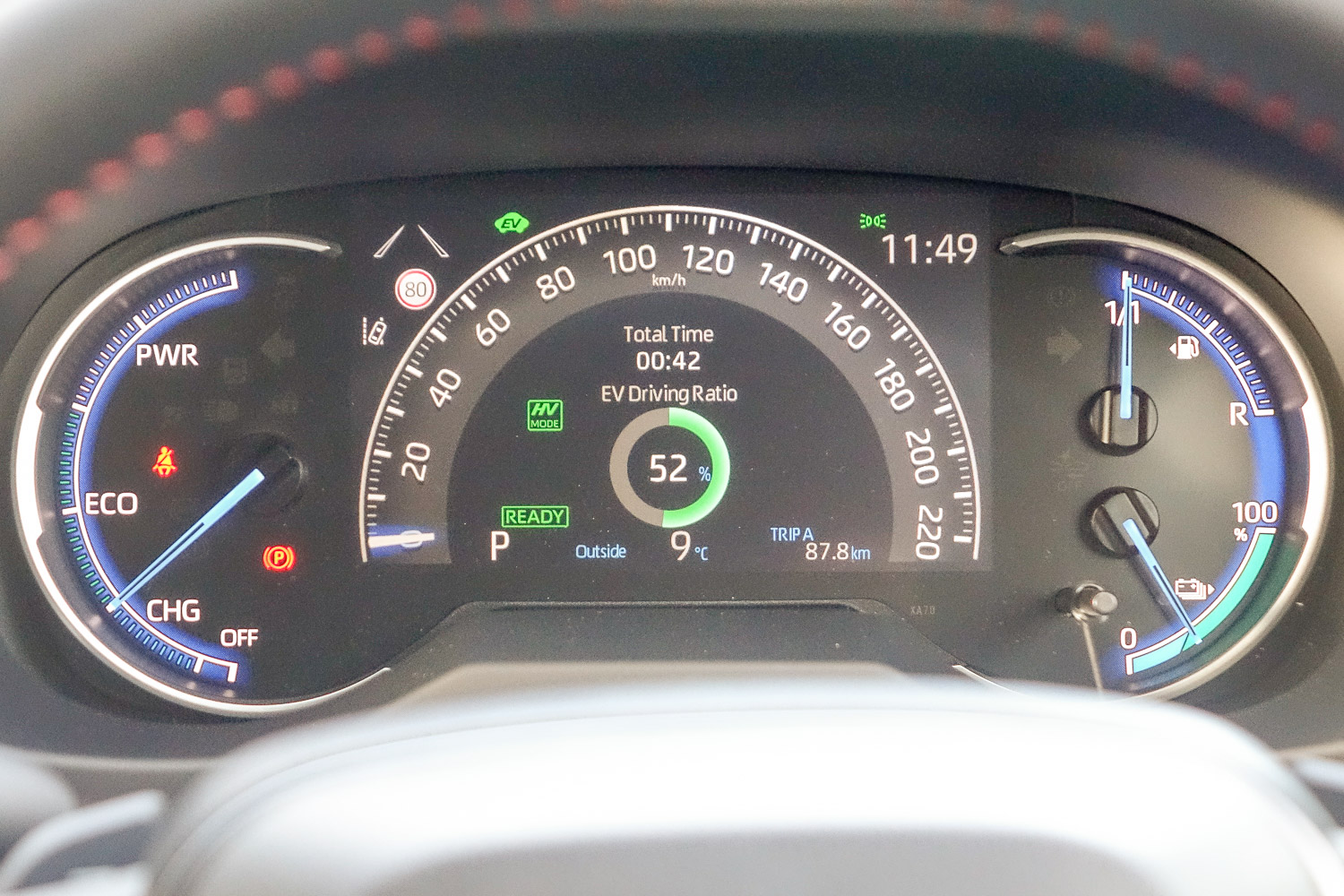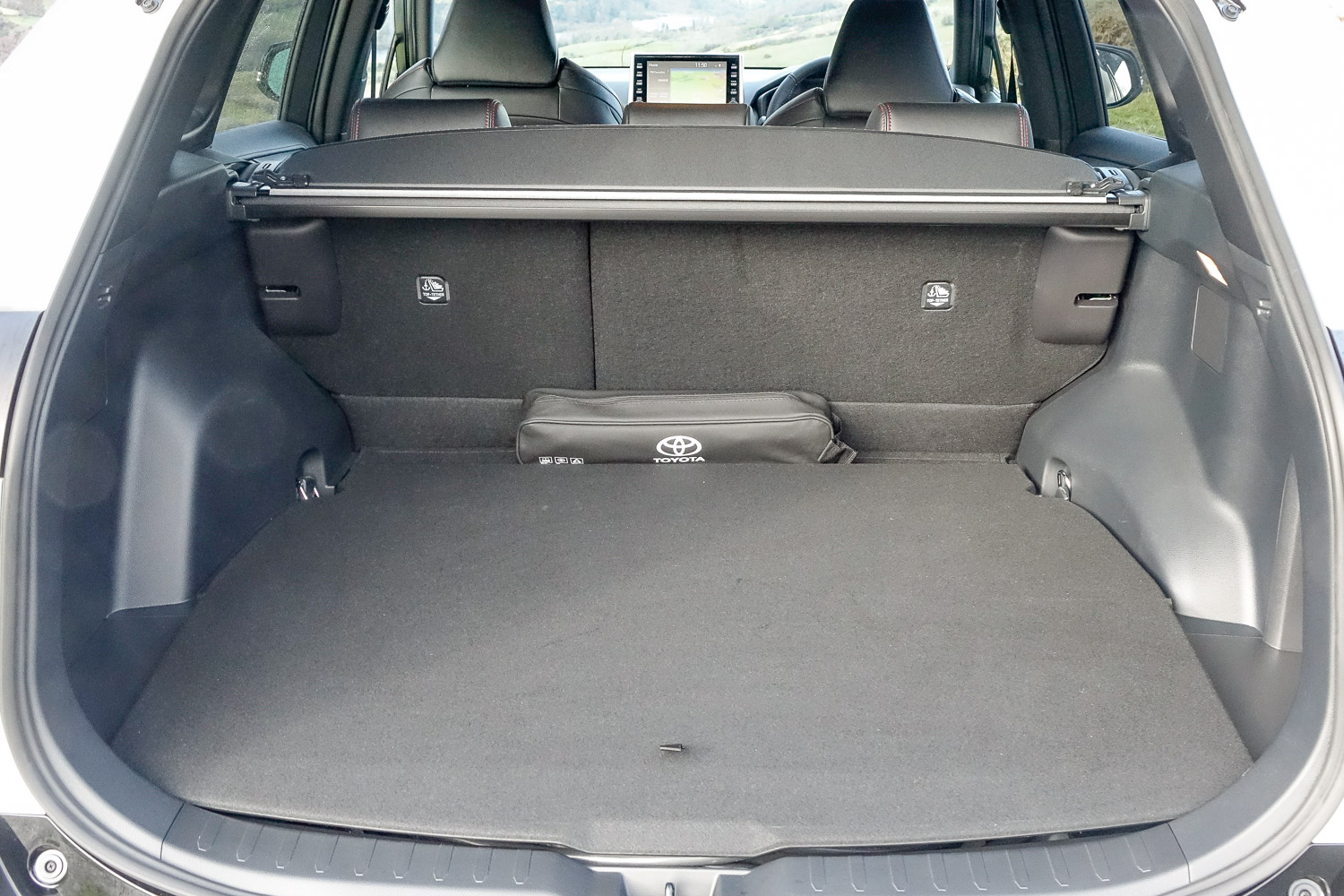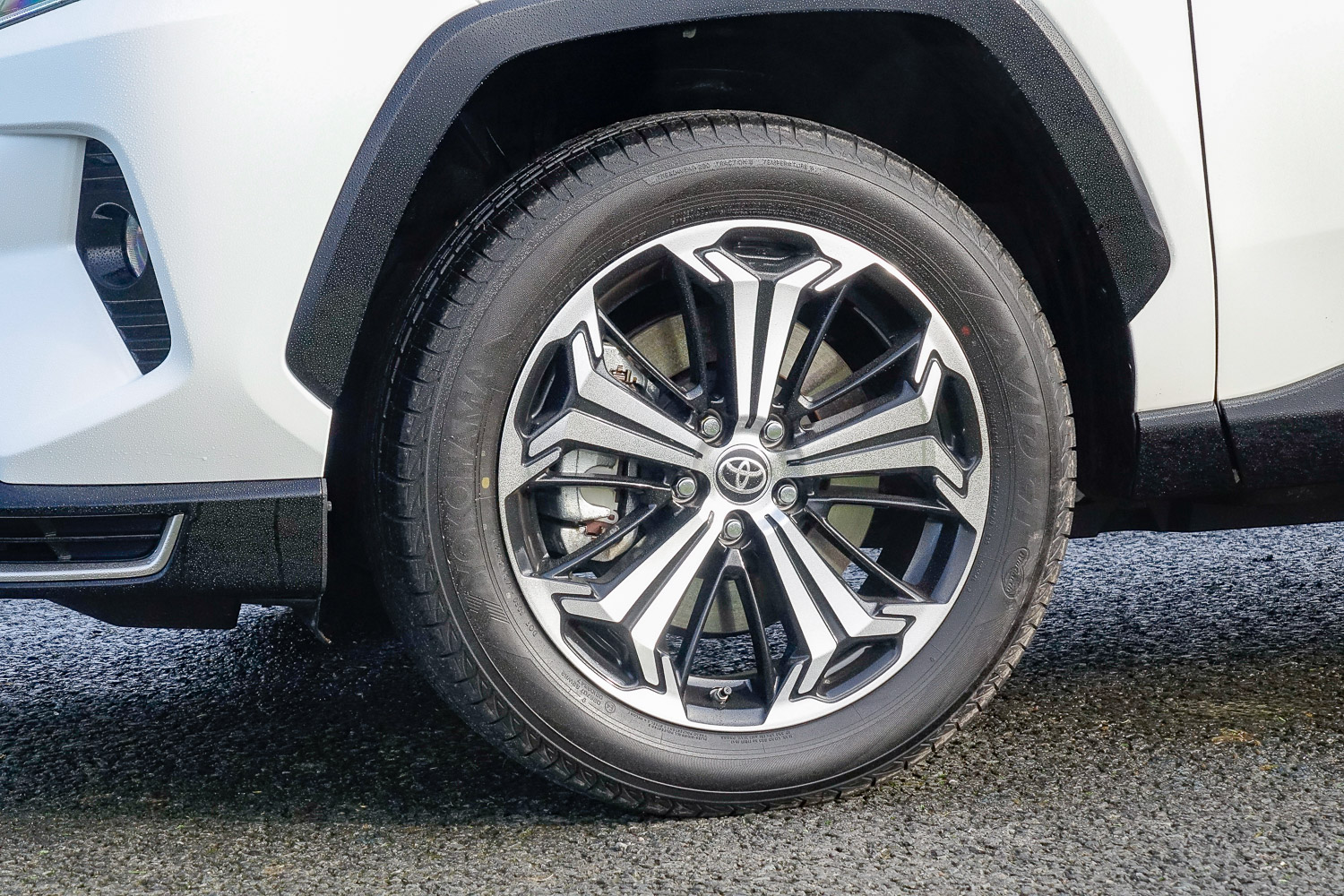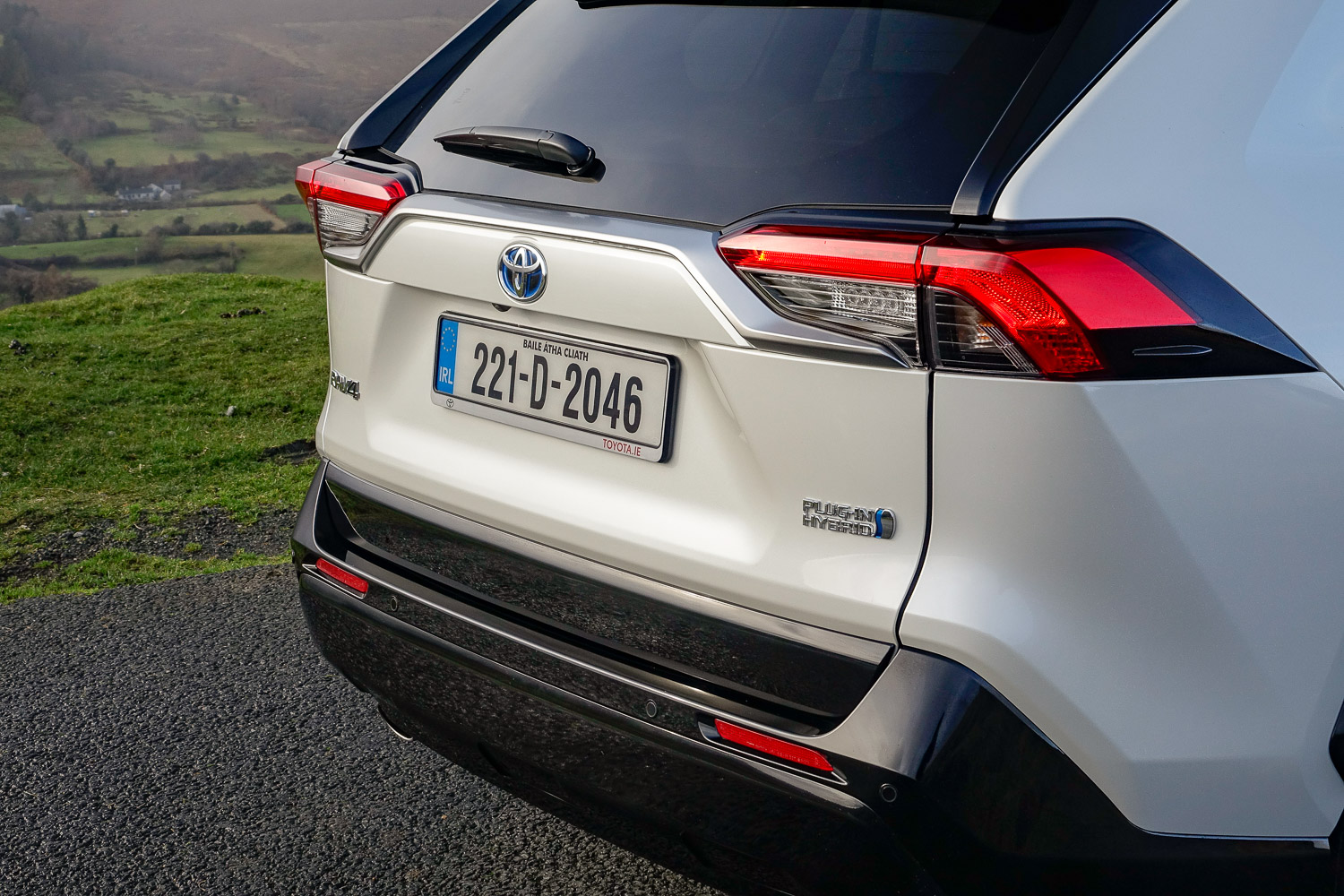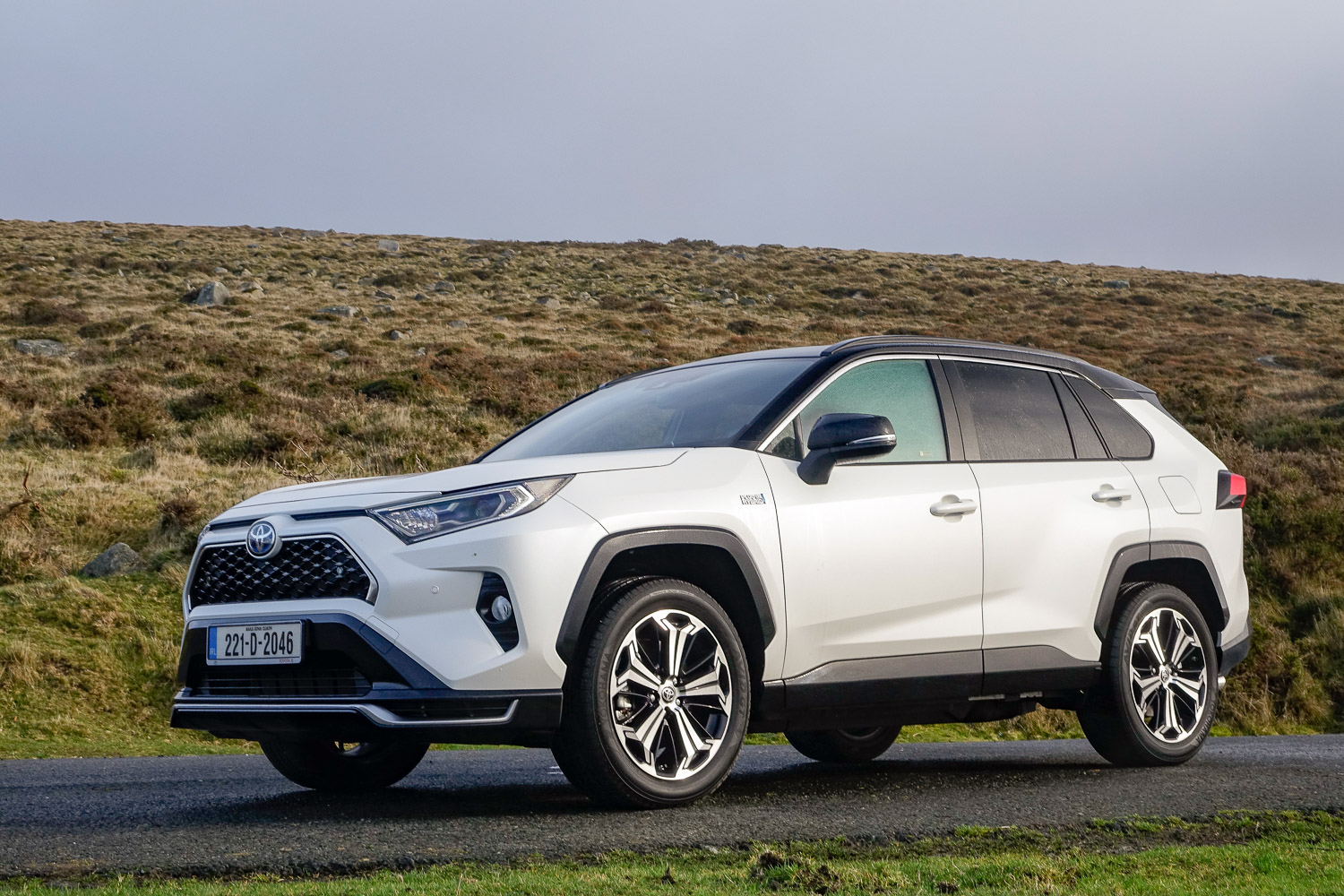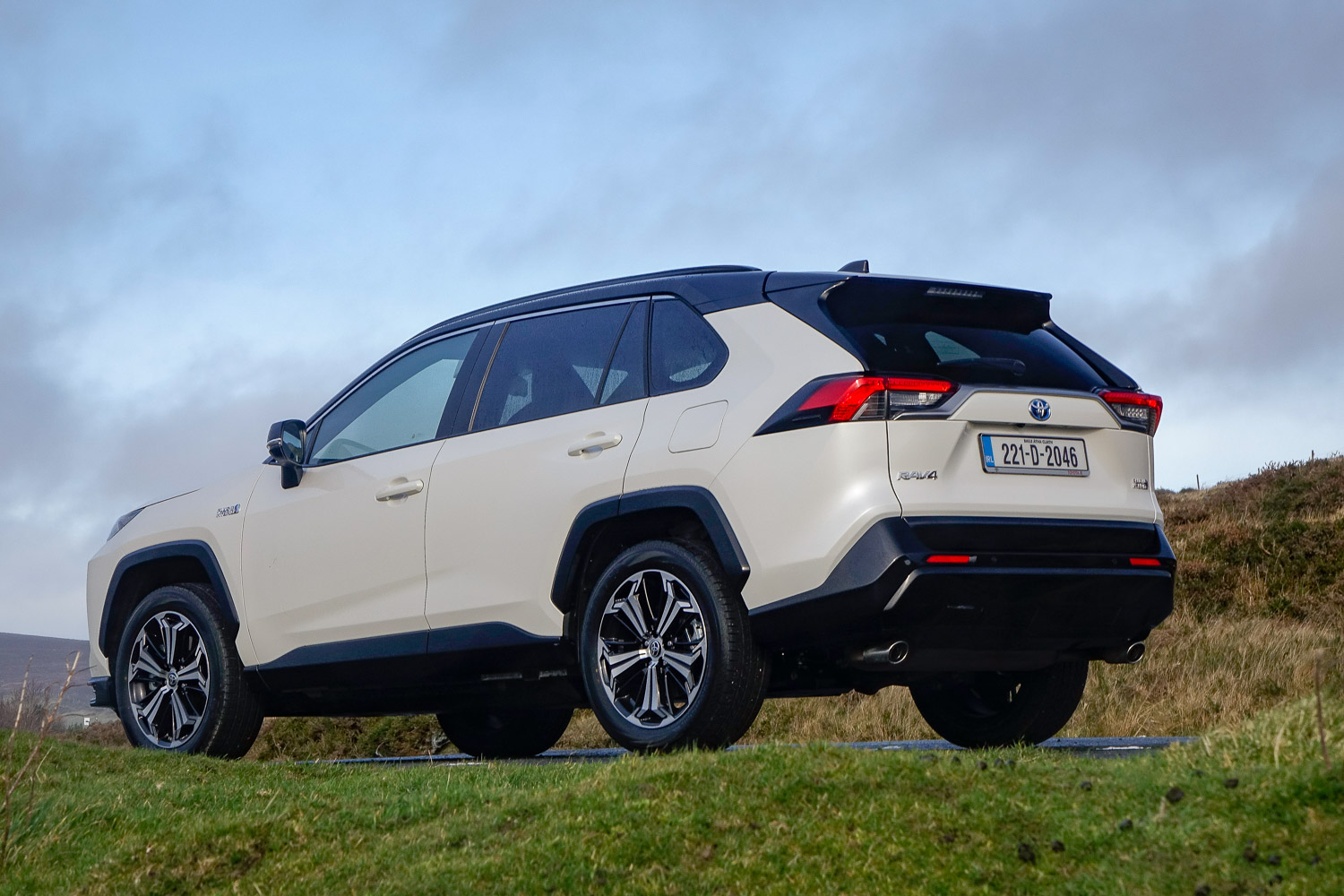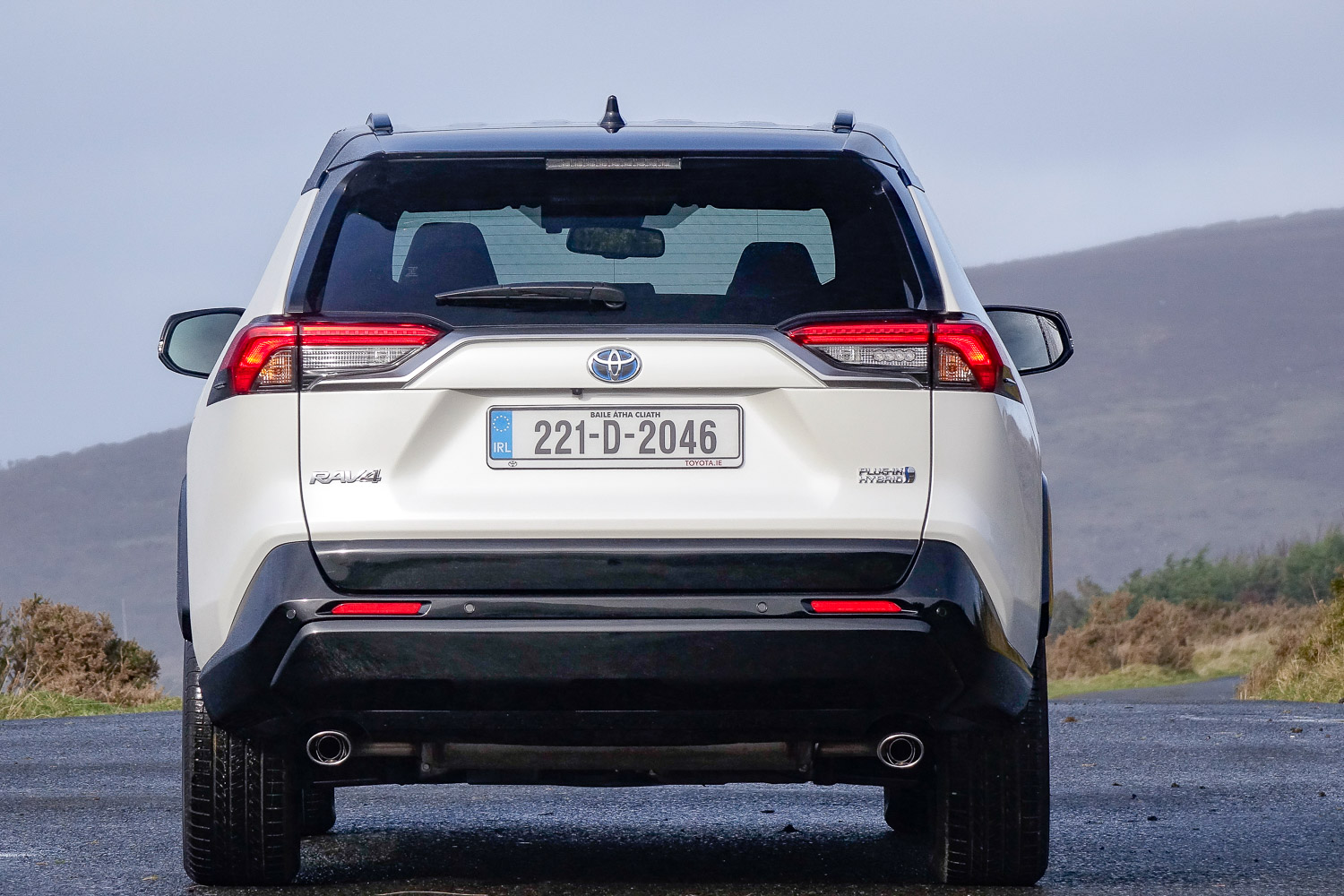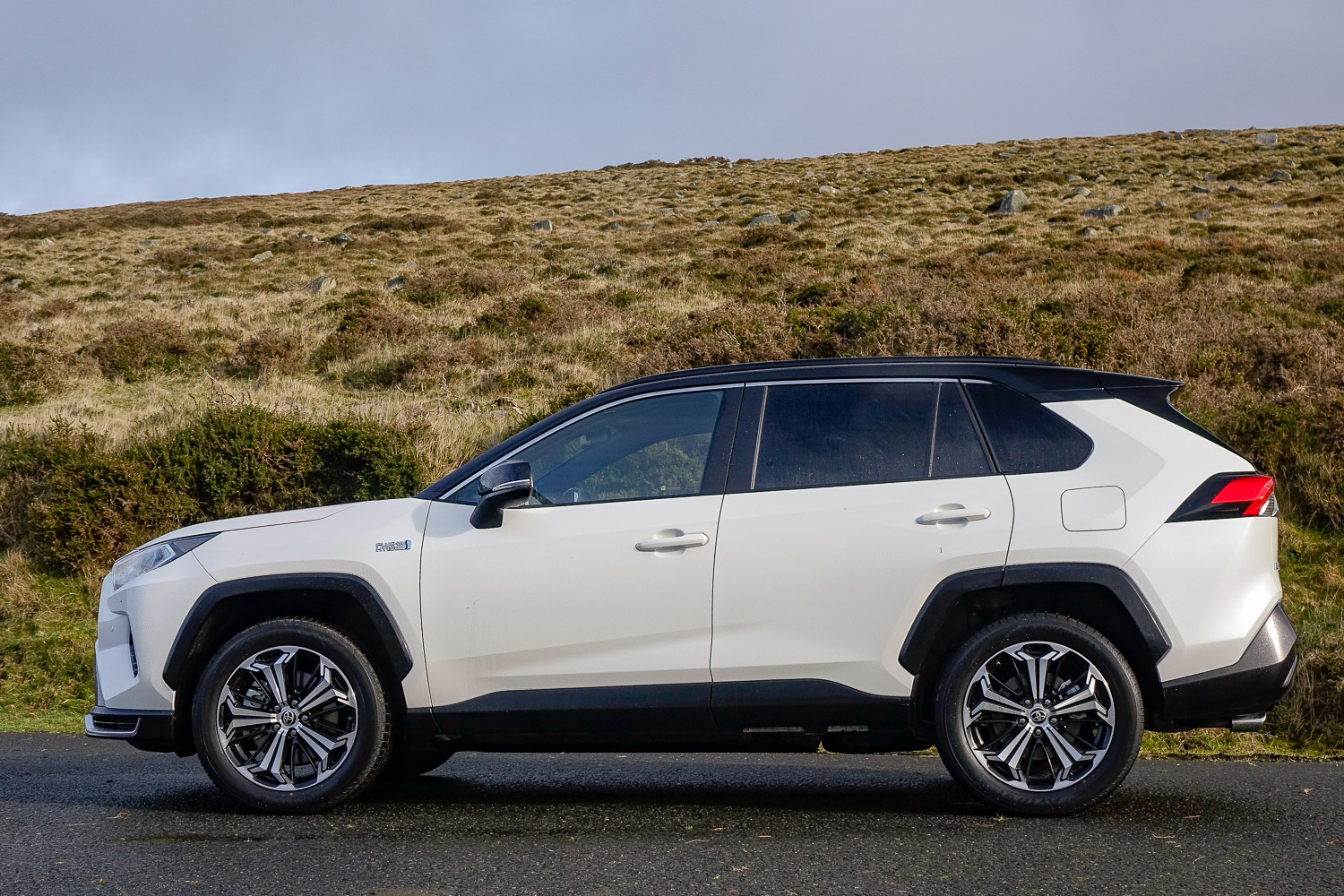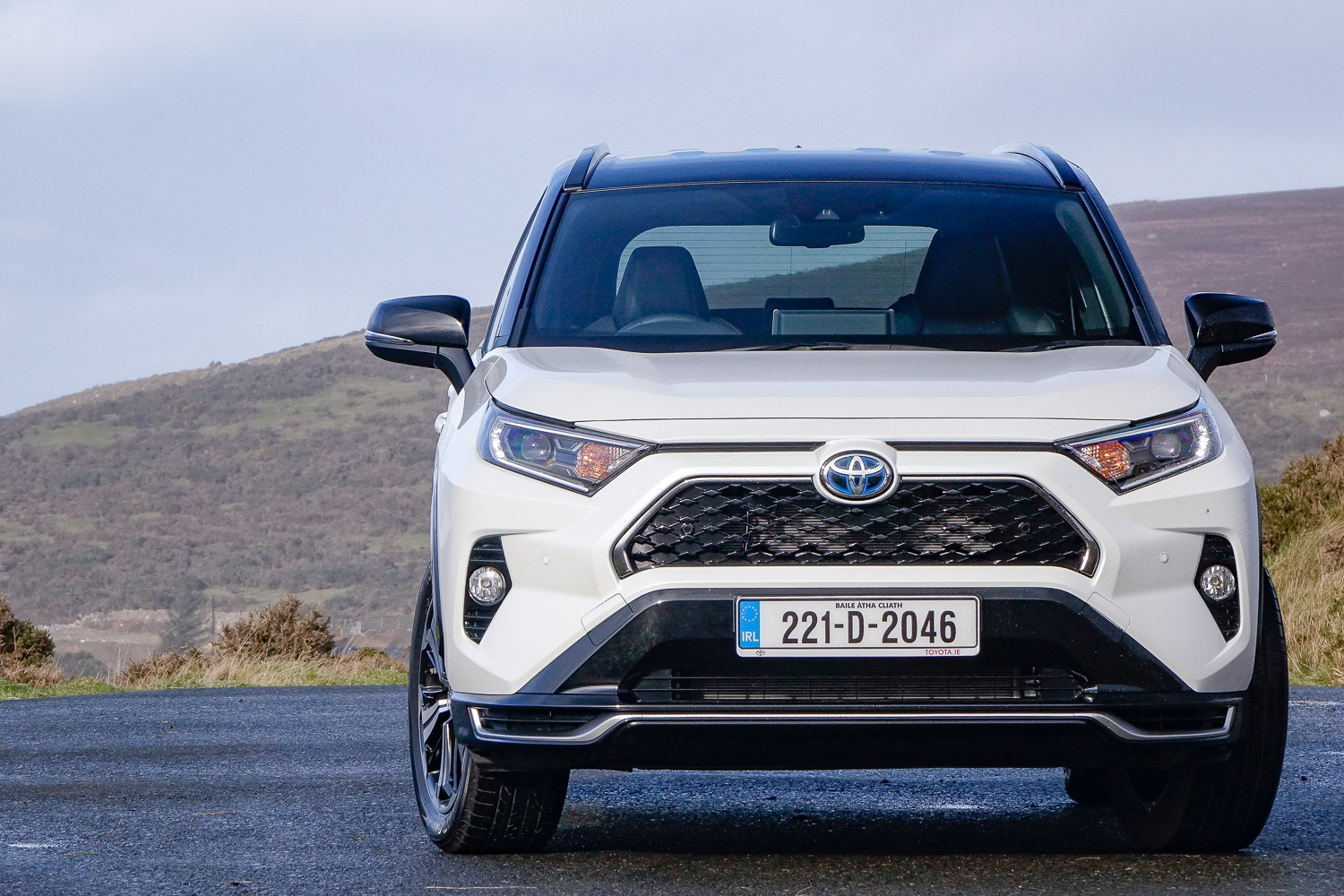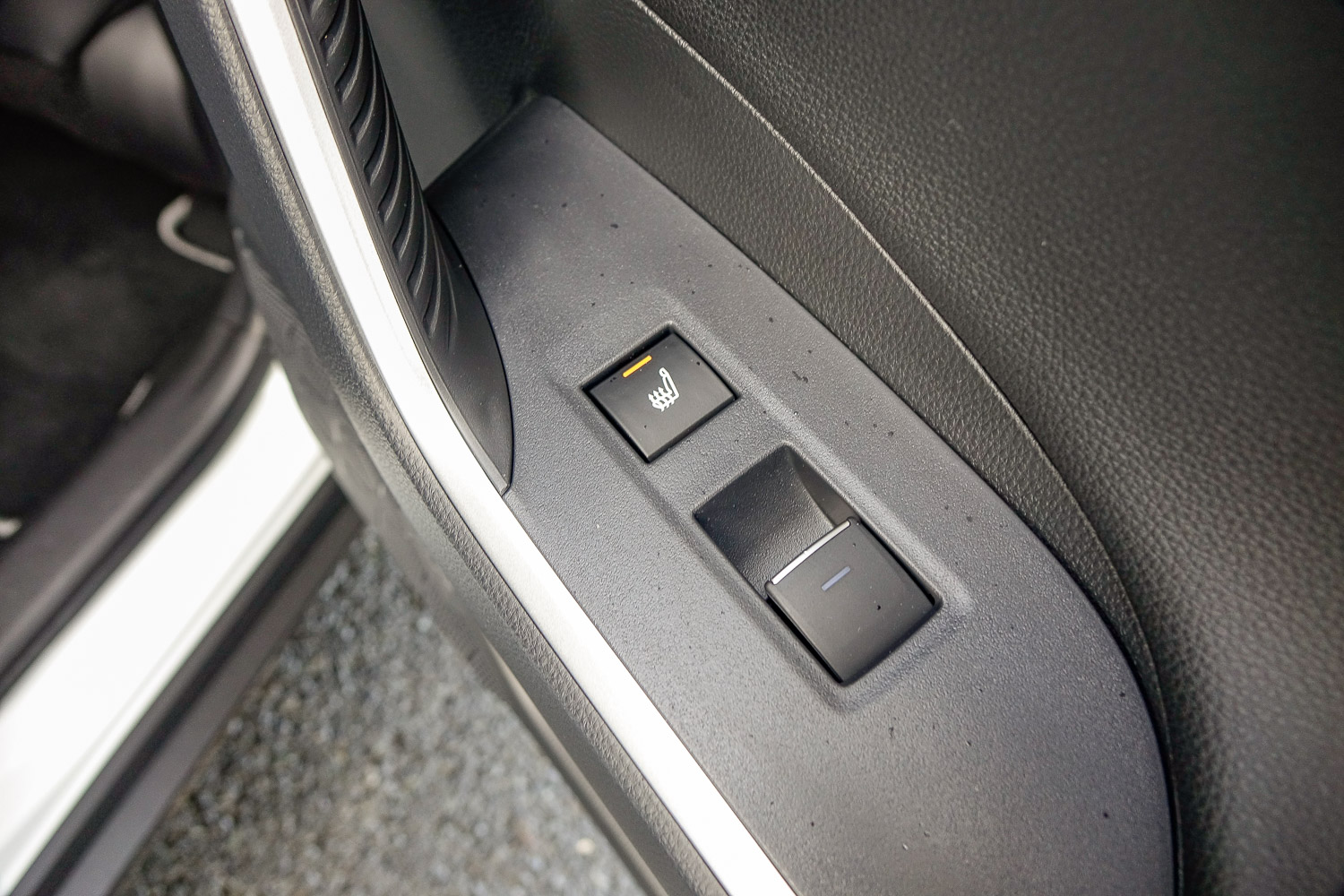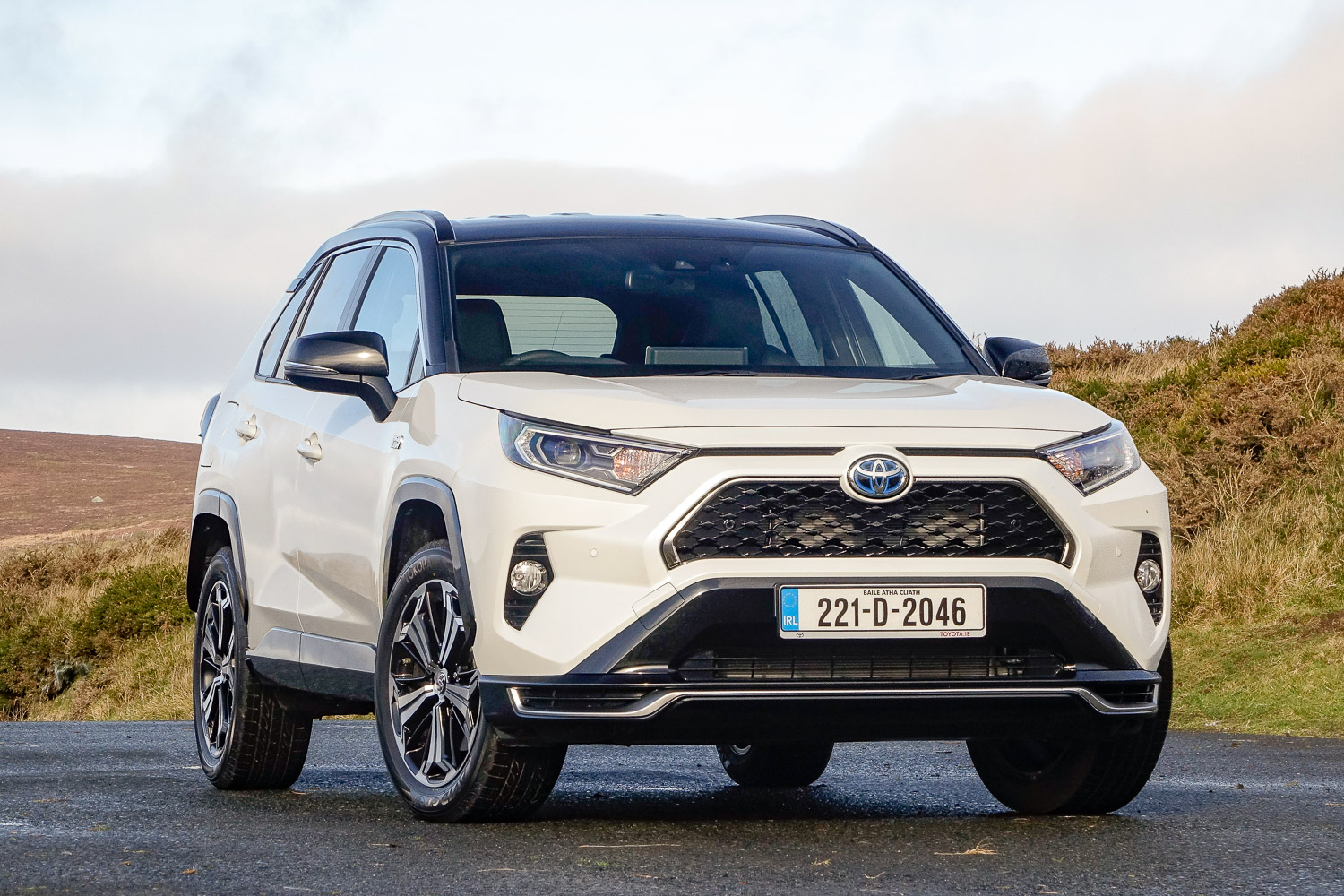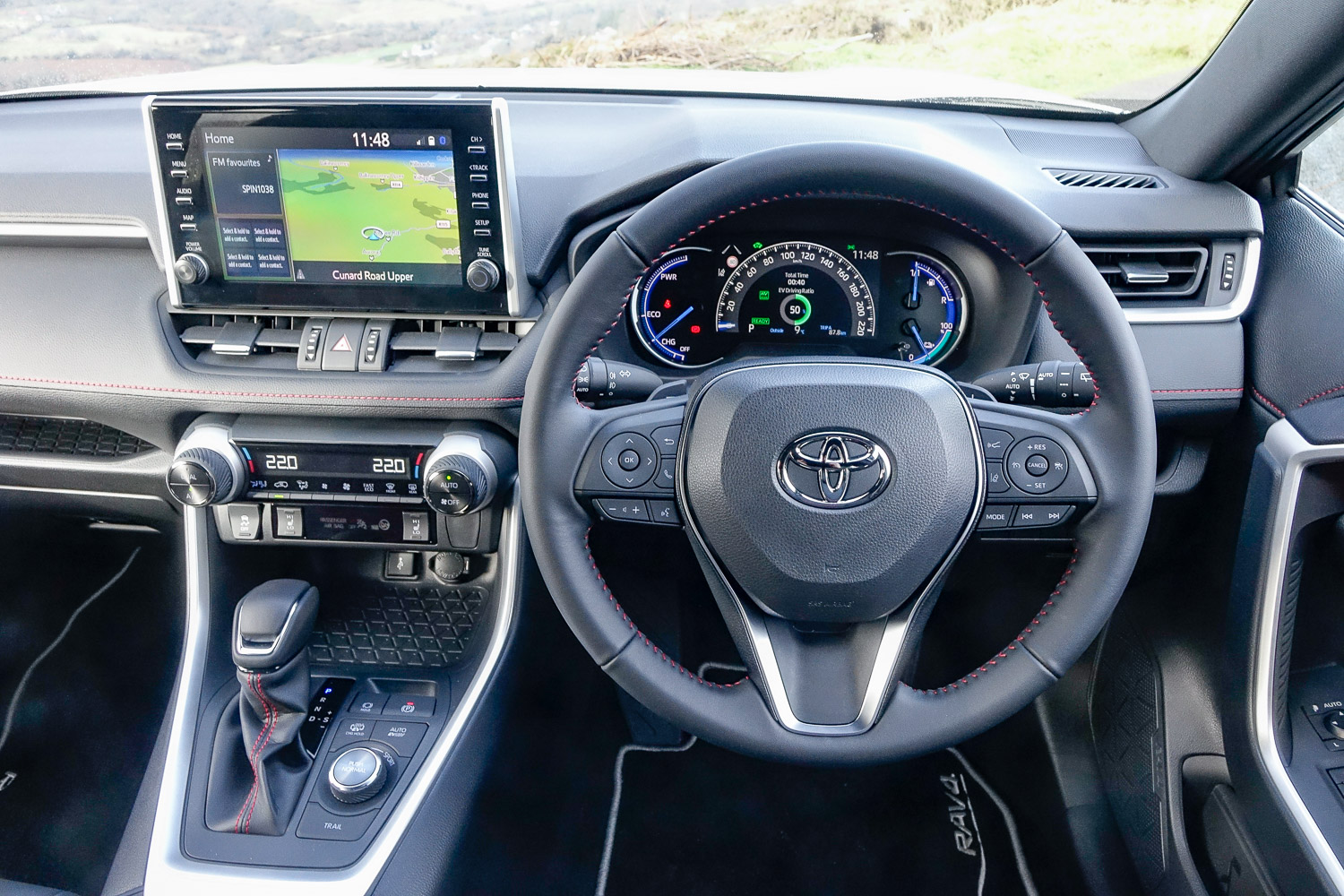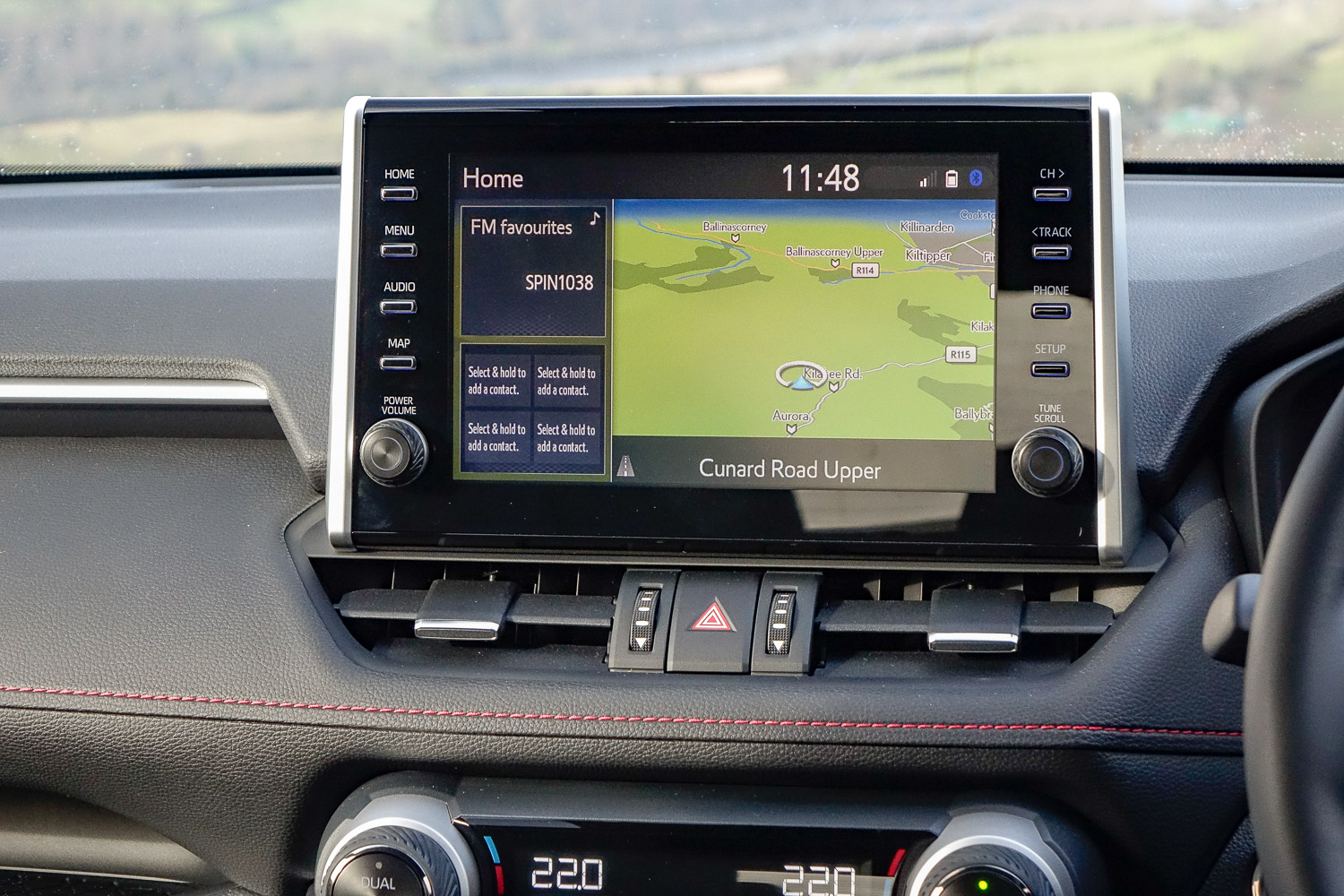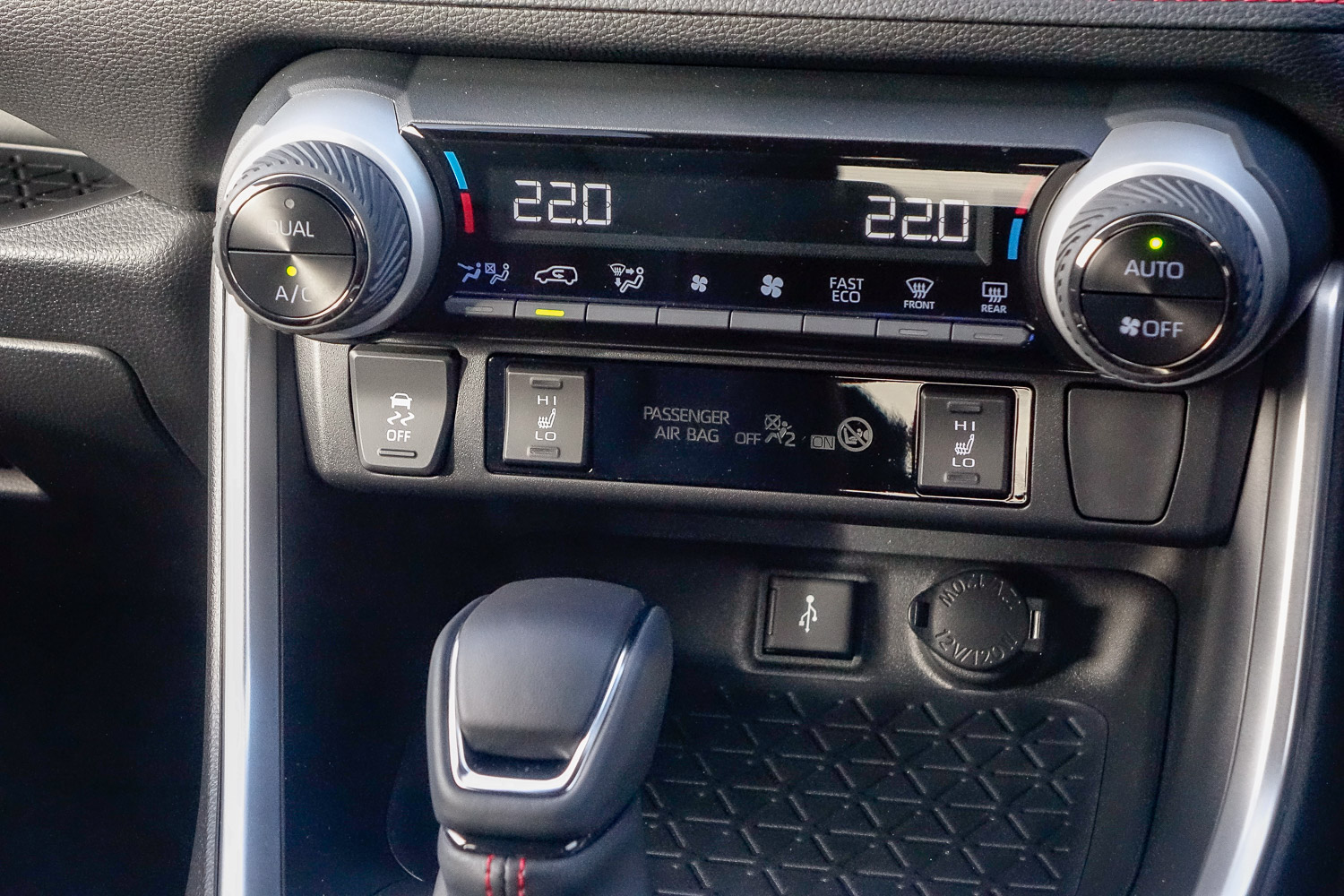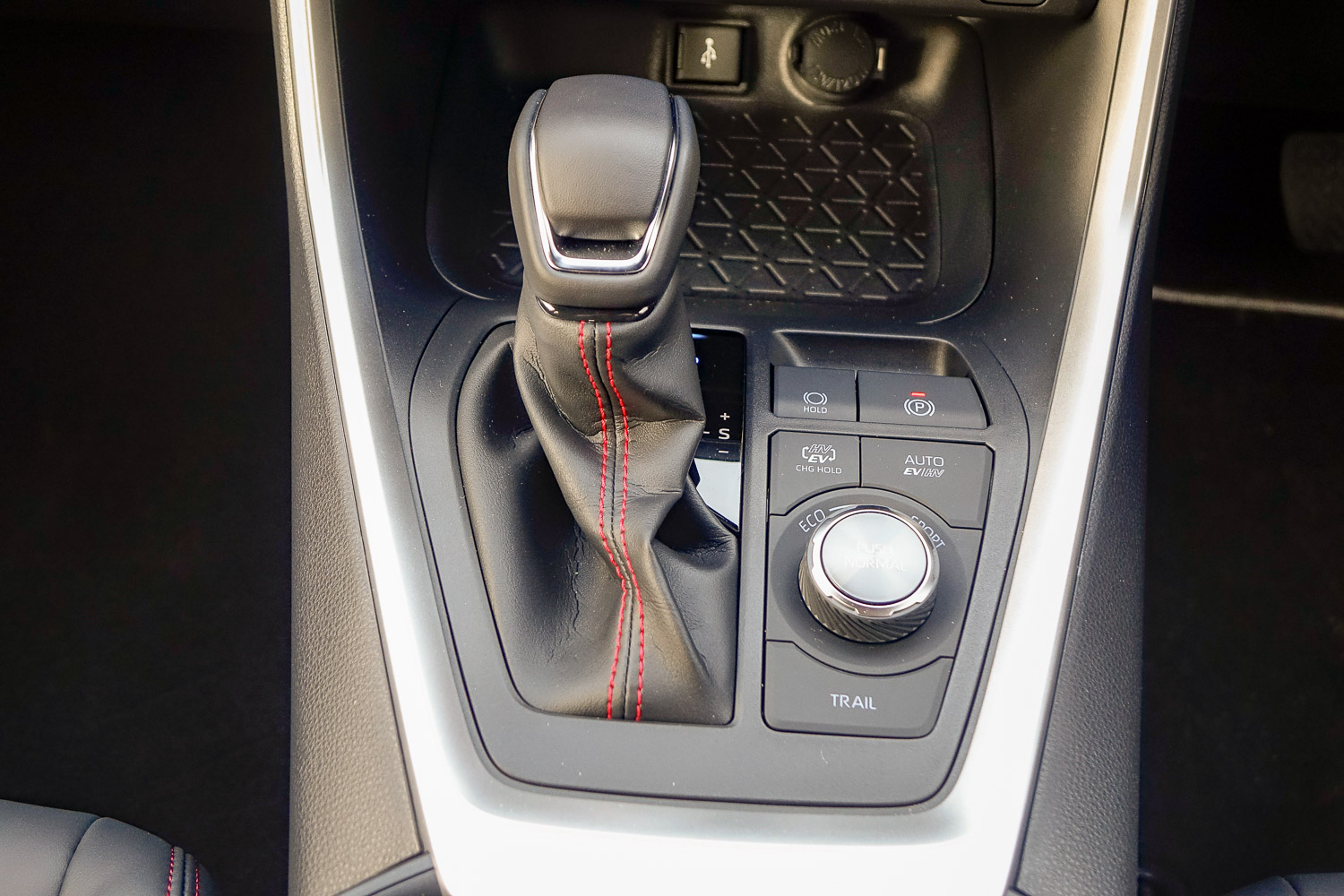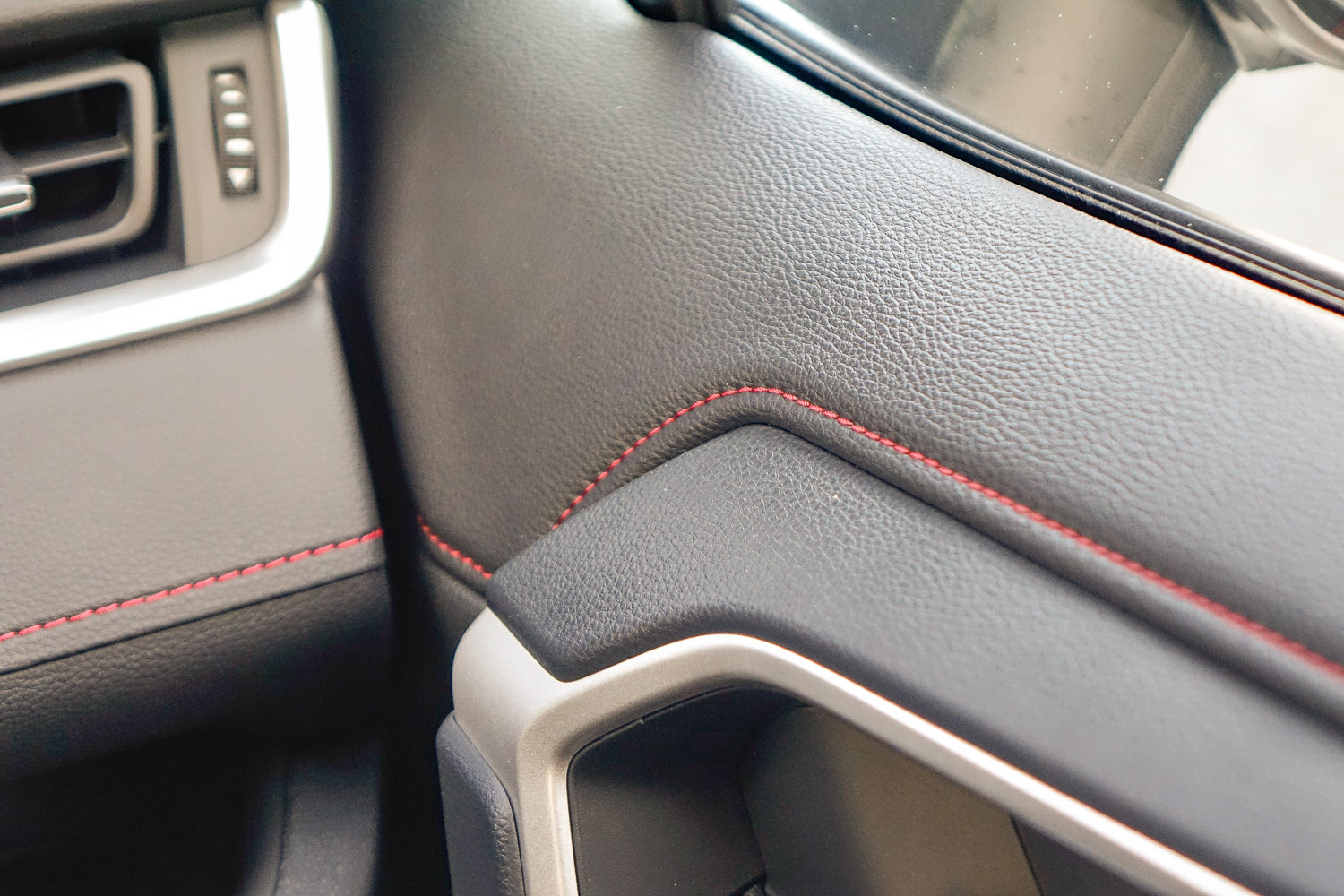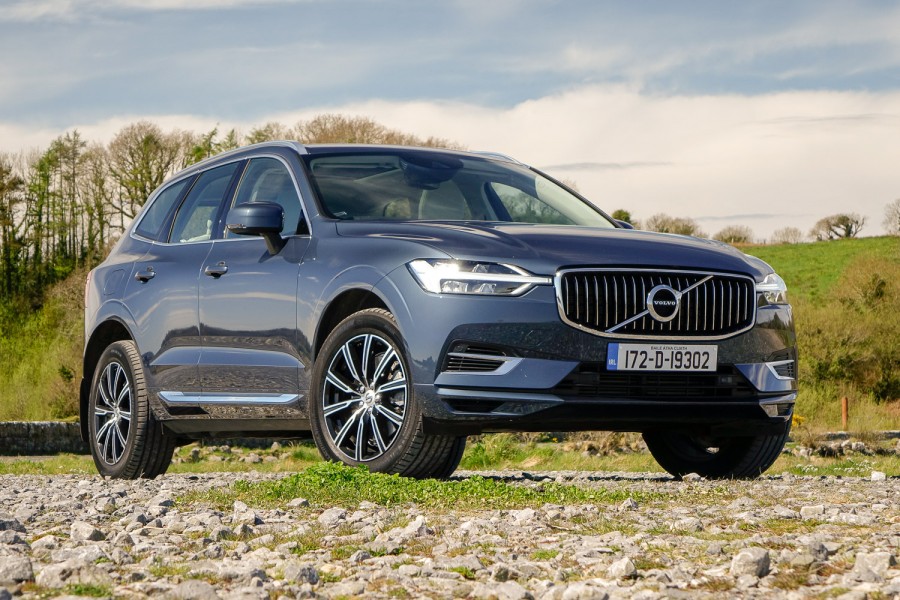Toyota RAV4 PHEV overview
Toyota has a quarter of a century of experience in building hybrid cars, but the Toyota RAV4 Plug-in Hybrid is one of the company's first PHEVs. It's based on the fifth-generation RAV4 hybrid that was launched in 2018, and essentially it uses the same running gear as the four-wheel-drive version of that car, but with a few upgrades.
The main differences are the addition of a more powerful electric motor up front, a larger lithium-ion battery and the fitting of a plug socket to charge it up. That battery gives the RAV4 Plug-in Hybrid an official range of 75km from a full charge.
The most direct rival to this RAV4 is the Ford Kuga hybrid, while the RAV4 is upmarket enough to be considered as an alternative to premium models such as the Volvo XC60, BMW X3 and Audi Q5, which are all available as plug-in models, too.
The Toyota RAV4 model range
Irish pricing for the RAV4 starts at €40,145, but this is for the standard hybrid; the RAV4 Plug-in Hybrid starts from €50,775. That might sound like a steep increase, but the PHEV version isn't offered in entry-level Luna trim, and if you want four-wheel drive in the RAV4 hybrid, you have to go for the high-spec Platinum version, which is actually around €3,000 more (and less powerful) than the entry point to the Plug-in Hybrid line-up.
That entry point is Sol trim, which comes with pretty much all of the equipment you could possibly want. Toyota's Touch 2 infotainment system is standard, and while the set-up isn't the best on the market, it does come with Apple CarPlay and Android Auto smartphone integration, as well as Bluetooth.
Other kit includes 18-inch alloy wheels, climate control, keyless start, heated seats front and rear, auto lights and wipers, front and rear parking sensors and a reversing camera, as well as a comprehensive suite of safety systems. This includes lane assist and forward collision alert, and adaptive cruise control is included, too.
Move up to Sport trim like our test car, and the changes are purely cosmetic, with 19-inch alloys and a gloss black roof and exterior trim pieces added. You'll pay around €2,100 to upgrade to this version.
Both cars feature the same 2.5-litre petrol engine and twin electric motor set-up seen in four-wheel-drive versions of the RAV4. The basics are the same, with the engine and one electric motor sending power to the front axle via a CVT-style automatic gearbox, while the second electric motor is mounted on the rear axle. Unlike some all-wheel-drive SUVs, there's no physical link between the petrol engine and the rear wheels here.
Where the RAV4 Plug-in Hybrid differs from the hybrid is that there's an increase in power. The engine and electric motor up front have almost identical outputs (185hp and 182hp respectively), while the rear motor makes 54hp. Not all of the power sources operate at the same time, though, and Toyota quotes a total system output of 306hp for the car.
The other upgrade is for the hybrid battery. Out goes the RAV4's 1.6kWh pack for an 18.1kWh lithium-ion unit. This is charged via a Type 2 socket, and while there is no high-voltage on-board charging tech, the battery can be replenished in two hours and 45 minutes from a wallbox. It's seven and a half hours form a domestic plug socket, and Toyota includes both charging leads so you can plug the RAV4 PHEV into both types of outlet as needs be.
You can get behind the wheel of a Toyota RAV4 Plug-in Hybrid for €374 per month on a personal contract plan, but go to the Toyota Ireland website for the latest offers.
The Toyota RAV4 interior
Overall, the Toyota RAV4 is a good five-seat family SUV, and the Plug-in Hybrid version does nothing to spoil its appeal. The RAV4 is a handsome looking machine that looks even sharper in Sport spec, with its black contrast roof and larger wheels - it really has presence, although we're still not sure about the chrome exhaust tips found dangling under the back bumper.
All versions of the PHEV are well equipped, but the Touch 2 infotainment system's interface isn't the most user-friendly set-up around. If you're more familiar with using your smartphone for navigation, then we'd recommend plugging in for Apple CarPlay or Android Auto instead, since they're more intuitive to use.
The cabin itself feels like an upmarket place to spend time. Build quality is excellent, although there are a few more hard plastics on show than you'll find in some of the RAV4's premium rivals. Still, the RAV4 has an improved sense of upmarket quality when compared to previous examples, yet it feels like it will easily cope with the punishment of everyday family life.
There's plenty of wheel and seat adjustment (only the driver's seat gets electric controls, though), while the space in the back seats is generous and access is good via the wide-opening doors. ISOFIX mounts are offered on the two outer chairs for fitting child seats, while there are four USB charging sockets included, two up front, two in the rear.
Move to the boot, and there's a useful amount of space, although the plug-in drive system does cut space a bit. There's a 500-litre boot in five-seat mode where the standard RAV4 offers 542 litres. Still, the high floor means there's space for both charging cables underneath, and there's even a space-saver spare wheel under there - few plug-in models of any size include one of those. We did have a minor bugbear about the powered tailgate - it opens and closes very slowly when activated.
The Toyota RAV4 PHEV driving experience
Toyota is known for making its cars as simple to drive as possible, no matter how they're powered, and the RAV4 Plug-in Hybrid is the same. The plug-in system requires no special driving techniques, just press the 'Power' button, select drive and off you go.
You get a commanding view of the road thanks to a raised driving position, while the light controls mean the RAV4 PHEV is simple to manoeuvre at low speeds. It's even enjoyable at higher speeds, too, which isn't something you could say of all past RAV4s. Thanks to the car's 306hp output, the PHEV is quick to get up to speed, as well, with 0-100km/h taking six seconds exactly.
Toyota has had to stiffen the RAV4's suspension to cope with the extra weight of the Plug-in Hybrid's bigger battery, so it feels a little on the firm side. However, that issue is likely to be mitigated if you choose Sol trim over the Sport model, thanks to its smaller wheels.
Unlike some plug-in hybrid models, the RAV4 relies on its electric system most of the time, with the petrol engine there to help out when needed. With a full charge, the car is quiet and serene as it cruises around on battery power alone, yet there's barely any noise when the engine does fire up. It can get a little loud if you use all of the power available, but it's nothing like the sound of soaring revs so familiar from Toyota hybrids of the past.
During our time with the RAV4 Plug-in Hybrid, we travelled around 44km on electricity alone, some 30km short of the official figure, but this somewhere in line with what you'd expect form a PHEV in everyday driving (in cold conditions I might add, with a stretch of 120km/h motorway, too). Yet once the battery was flat, the RAV4's hybrid system still favoured electricity over petrol. We averaged 6.1 litres/100km over a 160km route, while a similar journey in a Volvo XC60 plug-in, for example saw a return closing in on 10 litres/100km once the battery had been exhausted.
As with any plug-in hybrid, the fuel economy you get from the RAV4 will entirely depend upon how often you charge the battery. Keep it topped up as often as possible just do short journeys and it could be months between visits to a petrol station.
Our verdict on the Toyota RAV4 PHEV
We're impressed with the Toyota RAV4 Plug-in Hybrid. It requires next to no compromise when it comes to the family-friendly side of the RAV4's character, and if you can get by on electric drive alone, then the cash you save on petrol costs will easily outweigh the car's purchase price. Besides, if you need a four-wheel-drive RAV4, it's the least expensive way of getting one.
It feels like a premium product inside, while the hybrid system is well integrated and still delivers great efficiency once the battery is flat - few rival PHEVs have the same talent. We'd save a couple of grand and choose Sol trim, though, since it has largely the same equipment as the Sport model, but without the cosmetic upgrades.

